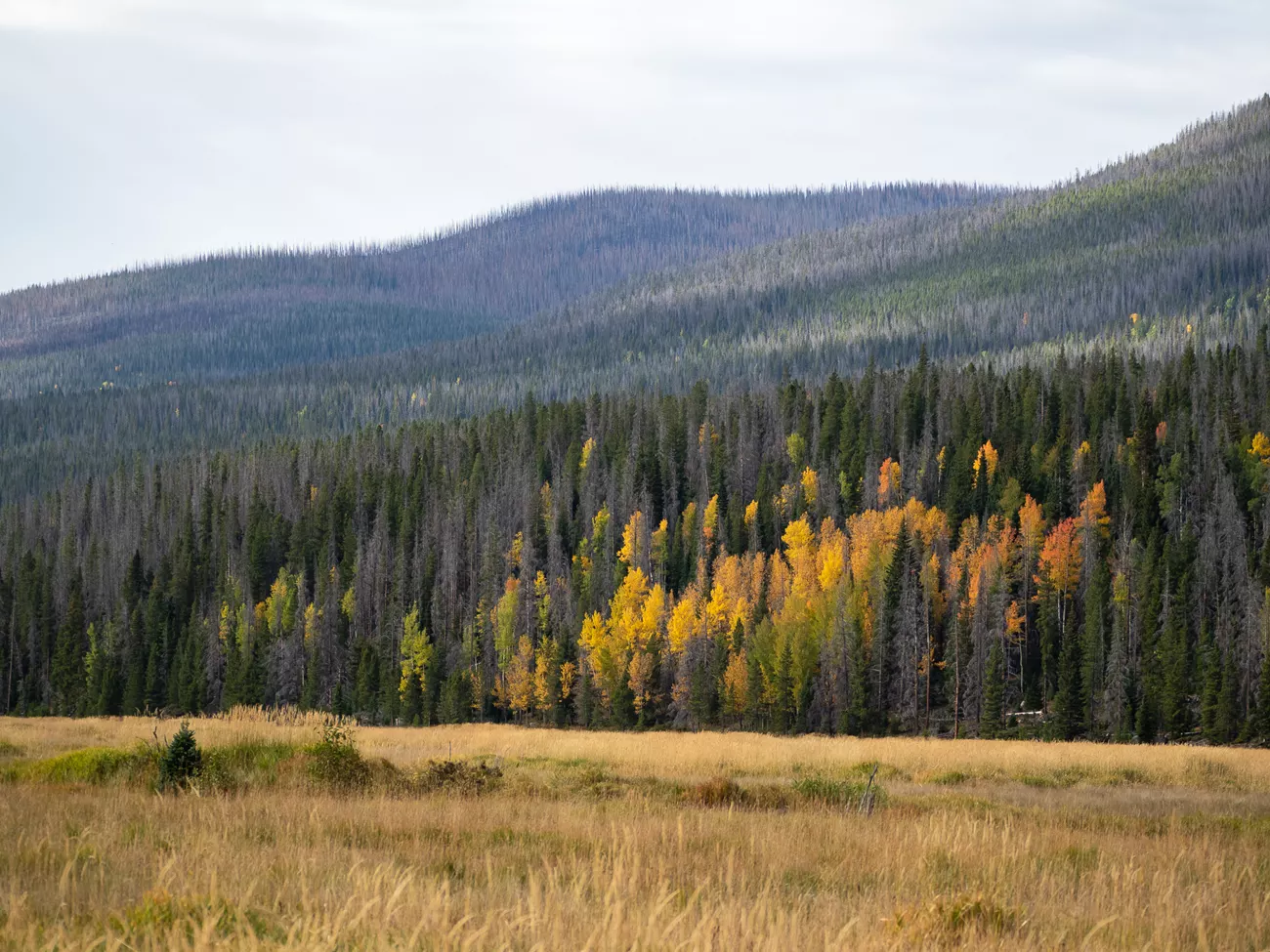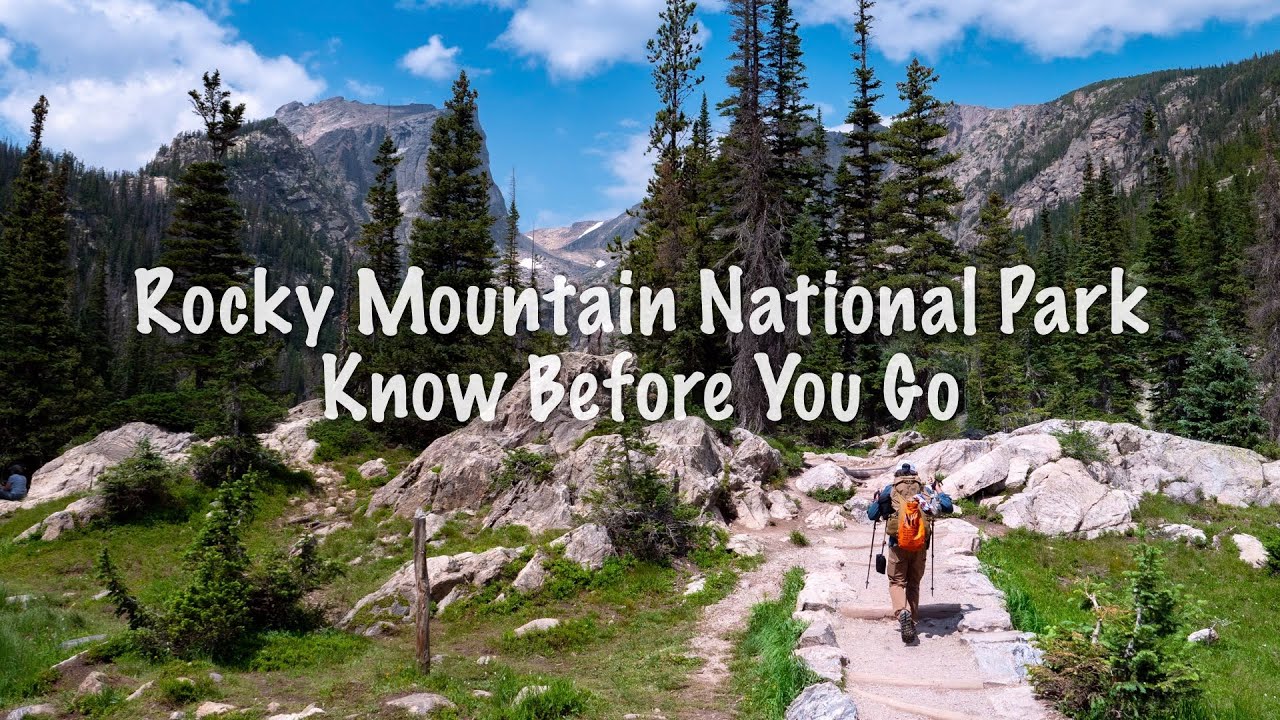Best Time To Visit Rocky Mountain National Park - Tips For Planning Your Trip
The best time to visit Rocky Mountain National Park depends on various factors such as weather, crowd levels, and the activities you plan to engage in.
Author:Jane RestureJul 04, 20237.3K Shares409.5K Views

The best time to visit Rocky Mountain National Parkdepends on various factors such as weather, crowd levels, and the activities you plan to engage in.
The keyword "best time to visit Rocky Mountain National Park" is an important consideration for travelers looking to make the most of their experience in this stunning national park.
By understanding the seasonal changes and the unique offerings of each period, you can plan your visit accordingly and maximize your enjoyment of the park's natural beauty and recreational opportunities.
June To September
During the peak tourism season in Rocky Mountain National Park, which runs from June through September, the number of people in the park will be comparable to the height of the mountains themselves.
It is, however, the optimum time to visit the park to guarantee that Trail Ridge Road, the park's primary east-to-west road, is available to automobiles and that all of the park's trails and attractions are open and easily accessible to visitors.
Plan your trip during the week in the autumn if you want to avoid the crowds of other visitors. The National Park Service reports that weekend attendance in September is fifty percent more than that on weekdays.
During these months, daytime temperatures often hover in the 70s, but they may fall to as low as the 40s in the nights, so it is essential to carry layers of clothing.
Take into consideration that this is the time of year when Estes Park's room costs are at their highest, but you may find more reasonably priced accommodations at the YMCA of the Rockies or at nearby campsites.
October To May
There are fewer visitors to Rocky Mountain National Park between the months of October through May; nevertheless, this is also the time of year when snowfall is more likely to occur, and it may occasionally fall in significant amounts, which can make it difficult for tourists to go trekking or enjoy a beautiful drive.
In a similar vein, the weather in RMNP may become very cold, particularly in the months of January and February, with day averages ranging from the 20s to the 30s and nighttime temperatures sometimes falling into the negatives. This is especially true during the winter months.
Nevertheless, if you time your visit well, you may be able to enjoy the park almost entirely to yourself during the early autumn or late spring months on days with temperatures that are at least somewhat bearable. In addition, the region's wildflowers start to blossom between the end of April or the beginning of May, depending on the elevation.
Weather And Temperature
The climate may shift dramatically from one part of Rocky Mountain National Park to another due to the park's huge size. Even if you are still inside certain boundaries, the weather will change as you go farther and further upward.
Because of the wide elevation variation, which extends from 7,860 to 14,259 feet, it is possible to experience a number of "seasons" in a single day.
When making travelplans to Rocky Mountain National Park, it is essential to take the local temperature and weather into careful account.
The following table compares the average temperatures and number of rainy days in Kawuneeche Valley, which is located on the west side of Rocky Mountain National Park, to Estes Park, which is located on the east side of the park.
Always be sure to check the weather forecast before venturing out into the park to get the most accurate information possible.

Rocky Mountain National Park | What to Know Before You Go | Estes Park & Denver Colorado
Best Time To Visit Rocky Mountain National Park For Hiking
Spring, summer, and autumn are the optimal hiking seasons in Rocky Mountain. Depending on which trails you wish to hike and how high you wish to ascend, the optimal season will vary.
Snow persists until mid-June at higher elevations, and Trail Ridge Road is typically closed until mid to late-May. In the winter, snowshoeing, cross-country skiing, and hiking with traction devices are excellent alternatives to hiking. Examine the trail conditions to determine how much snow is affecting it.
There are over 355 miles of trails in the park, ranging from simple riverside strolls to summiting 12,000-foot peaks. There are trails for hikers of all experience levels and abilities in the park, making hiking in the park a magnificent experience.
We recommend going on a guided day hike to learn about the geology and history of the Rockies from a knowledgeable guide.
Cheapest Time To Visit Rocky Mountain National Park
If you're looking to get the most out of your holiday without breaking the bank, Rocky Mountain National Park in the winter is the way to go. Excellent wintertime activities like snowshoeing, sledding, and cross-country skiing are best experienced during the colder months.
During the colder months of the year, park rangers lead participants in a variety of activities that may be enjoyed on either side of the park. Even if automobile traffic is prohibited on the major thoroughfares, pedestrians will still be able to access these areas.
The trailhead for the Colorado River will, as a general rule, continue to be accessible whenever the weather will allow it. It has been decided to prohibit vehicle movement on Old Fall River Road; however, Bear Lake Road will continue to be accessible. During this time of year, many hotels and tourism centers are closed to the public.
Both the Kawuneeche Valley Visitor Center and the Beaver Meadows Visitor Center are open throughout the whole year. There is a good chance that you will be able to find somewhere to stay and eat in the central business districts of the nearby towns of Grand Lake and Estes Park.
Worst Time To Visit Rocky Mountain National Park
Summertime at Rocky Mountain National Park is not the best time to go since the park is crowded and the cost of lodging is higher owing to the increased demand that occurs during this time of year. The park sees the most visitors during the summer months of July and August.
It may take longer than usual to go around the park and see its many attractions due to the enormous number of people that are currently there. Your options for things to do, on the other hand, are almost endless.
You have the option of going fishing, hiking, camping, or trekking if you so want. You have a number of options available to you, such as taking part in a program that is led by park rangers or going on a road trip that encompasses the whole of the park.
There are an endless number of choices for overnight stays within and outside of the park as a result of the fact that practically all of the hotels and the campground inside the park are now admitting visitors.
Having a well-thought-out strategy may be of great assistance in ensuring that you see as much as possible during your summertime trip to the park. You could also be interested in going to the western areas of the park, which have less people there.
Wildlife Viewing
Rocky Mountain National Park is home to a diverse range of wildlife species. Visitors have the opportunity to spot various mammals, including elk, mule deer, bighorn sheep, black bears, mountain lions, and coyotes. The park is also a habitat for smaller animals such as squirrels, chipmunks, and pikas.
Bird enthusiasts can enjoy sightings of golden eagles, peregrine falcons, owls, and a variety of songbirds. Additionally, the park is known for its population of cutthroat trout and other fish species in its lakes and streams.
Wildlife can be observed throughout the year in Rocky Mountain National Park, but the best time for wildlife viewing is generally during the early morning and late evening hours when animals are more active.
Spring and fall are excellent seasons for wildlife watching, as animals are often more visible during their mating seasons and migrations. Additionally, the fall season offers the opportunity to witness elk bugling, which is a unique and remarkable experience.
It's important to remember that wildlife is unpredictable, so patience and respect for their natural behavior is essential.
Several areas within Rocky Mountain National Park are known for their wildlife viewing opportunities. Moraine Park, located on the eastern side of the park, is a popular spot for observing elk herds.
The Beaver Meadows Visitor Center is another excellent location for wildlife viewing, providing visitors with informational exhibits and knowledgeable park rangers who can offer guidance.
Trail Ridge Road, which crosses the park's high alpine terrain, provides stunning panoramic views and opportunities to spot wildlife such as bighorn sheep and marmots. The Horseshoe Park and Upper Beaver Meadows areas are also frequented by various wildlife species.
Busiest Time To Visit
A. When is the busiest time to visit Rocky Mountain National Park? Rocky Mountain National Park experiences its peak visitation during the summer months, especially from late June to early September. During this time, the park's scenic drives, hiking trails, and popular attractions can become crowded with tourists.
The weekends and holidays also tend to be busier than weekdays. It's worth noting that fall foliage season, particularly in September and early October, can also attract a significant number of visitors seeking to witness the park's stunning autumn colors.
Peak season crowds in Rocky Mountain National Park can be quite substantial, especially at popular destinations such as Bear Lake, Trail Ridge Road, and the Alpine Visitor Center. Parking lots and trailheads can fill up quickly, and popular hikes may have heavy foot traffic.
Visitors should plan accordingly and arrive early in the day to secure parking and avoid congestion on the trails. The park's shuttle bus service can also help alleviate traffic and parking issues during peak times.
To avoid crowds during the busiest times in Rocky Mountain National Park, consider visiting on weekdays rather than weekends. Early morning and late afternoon visits tend to be less crowded, allowing for a more peaceful experience.
Exploring lesser-known trails and areas of the park can also provide opportunities to escape the crowds. It's essential to plan ahead, check the park's website for current information on parking and trail conditions, and consider exploring the park during the shoulder seasons of spring and fall when visitation is typically lower.
People Also Ask
When Is The Peak Wildflower Season In Rocky Mountain National Park?
The peak wildflower season in Rocky Mountain National Park typically occurs in July and August, when the alpine meadows are blanketed with vibrant blooms.
Are The Roads Open In Rocky Mountain National Park During The Winter?
Yes, the main roads in Rocky Mountain National Park, including Trail Ridge Road, are typically open during the winter, weather permitting. However, be prepared for snowy and icy conditions, and check for road closures or restrictions before your visit.
What Is The Best Time To See Wildlife In Rocky Mountain National Park?
The best time to see wildlife in Rocky Mountain National Park is during the early morning or late evening hours when animals are most active. Spring and fall are also good seasons for wildlife viewing, as animals are often seen during their migrations.
When Is The Busiest Time To Visit Rocky Mountain National Park?
The busiest time to visit Rocky Mountain National Park is during the summer months, especially in July and August. The park experiences high visitation during this time, so expect larger crowds and limited parking availability.
Can You Visit Rocky Mountain National Park In The Winter?
Yes, you can visit Rocky Mountain National Park in the winter. The park offers a range of winter activities such as snowshoeing, cross-country skiing, and wildlife viewing. However, be prepared for cold temperatures and snowy conditions.
Final Thoughts
Determining the best time to visit Rocky Mountain National Park is a decision that should take into account your personal preferences and priorities.
The keyword "best time to visit Rocky Mountain National Park" is subjective and can vary depending on factors such as weather, activities, and crowd levels.
Whether you prefer the vibrant colors of the fall foliage, the mild temperatures of the summer, or the serene winter landscapes, each season offers its own unique charm and opportunities for exploration.
It is advisable to research and plan ahead based on your specific interests and the experiences you wish to have in the park. By doing so, you can make the most of your visit and create lasting memories in this breathtaking natural wonderland.

Jane Resture
Author
Since she embarked on her first world trip in 2002, Jane Resture spent the past decades sharing her personal journey and travel tips with people around the world. She has traveled to over 80 countries and territories, where she experienced other cultures, wildlife she had only read about in books, new foods, new people, and new amazing experiences.
Jane believes that travel is for everyone and it helps us learn about ourselves and the world around us. Her goal is to help more people from more backgrounds experience the joy of exploration because she trusts that travel opens the door to the greatest, most unforgettable experiences life can offer and this builds a kinder, more inclusive, more open-minded world.
Latest Articles
Popular Articles